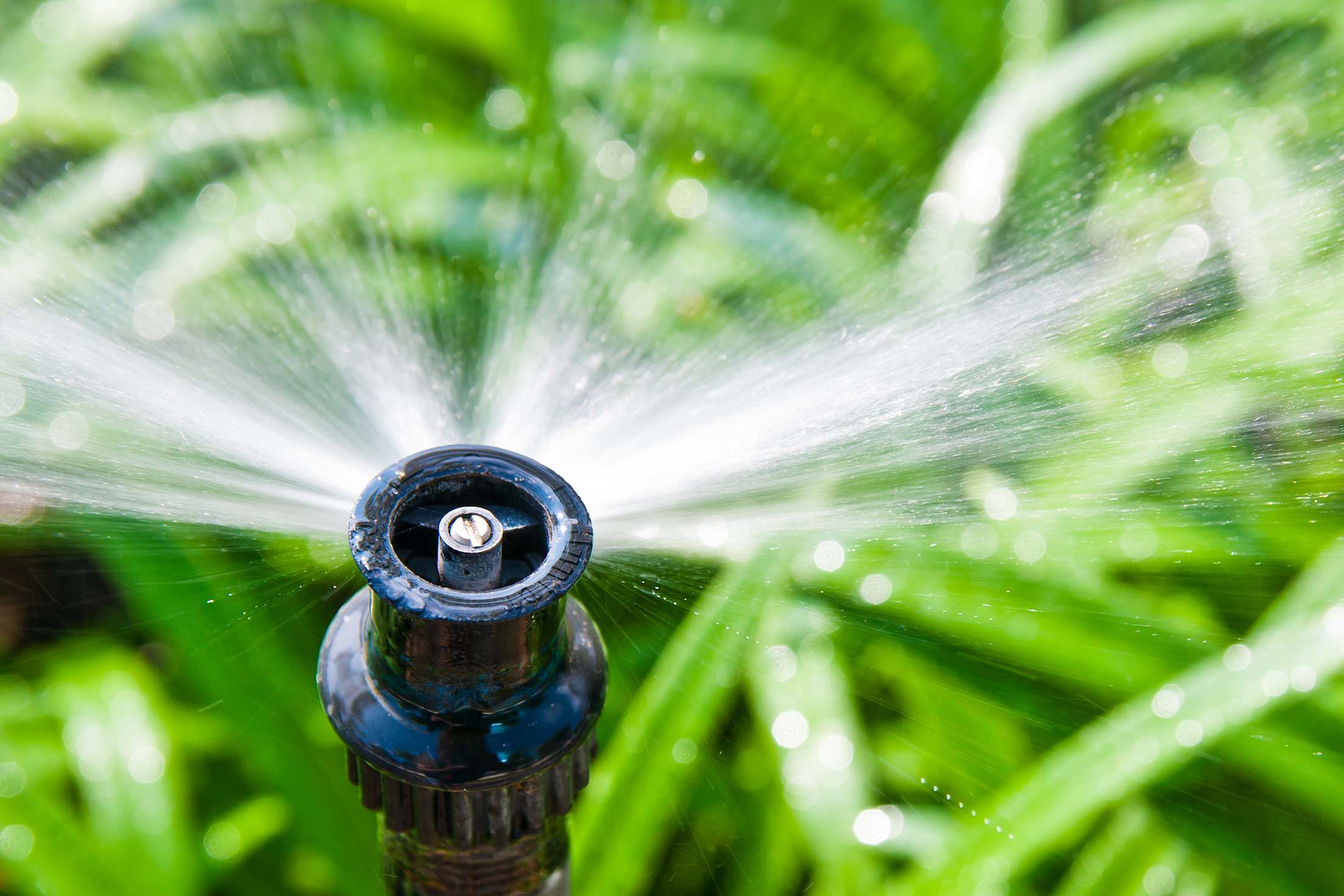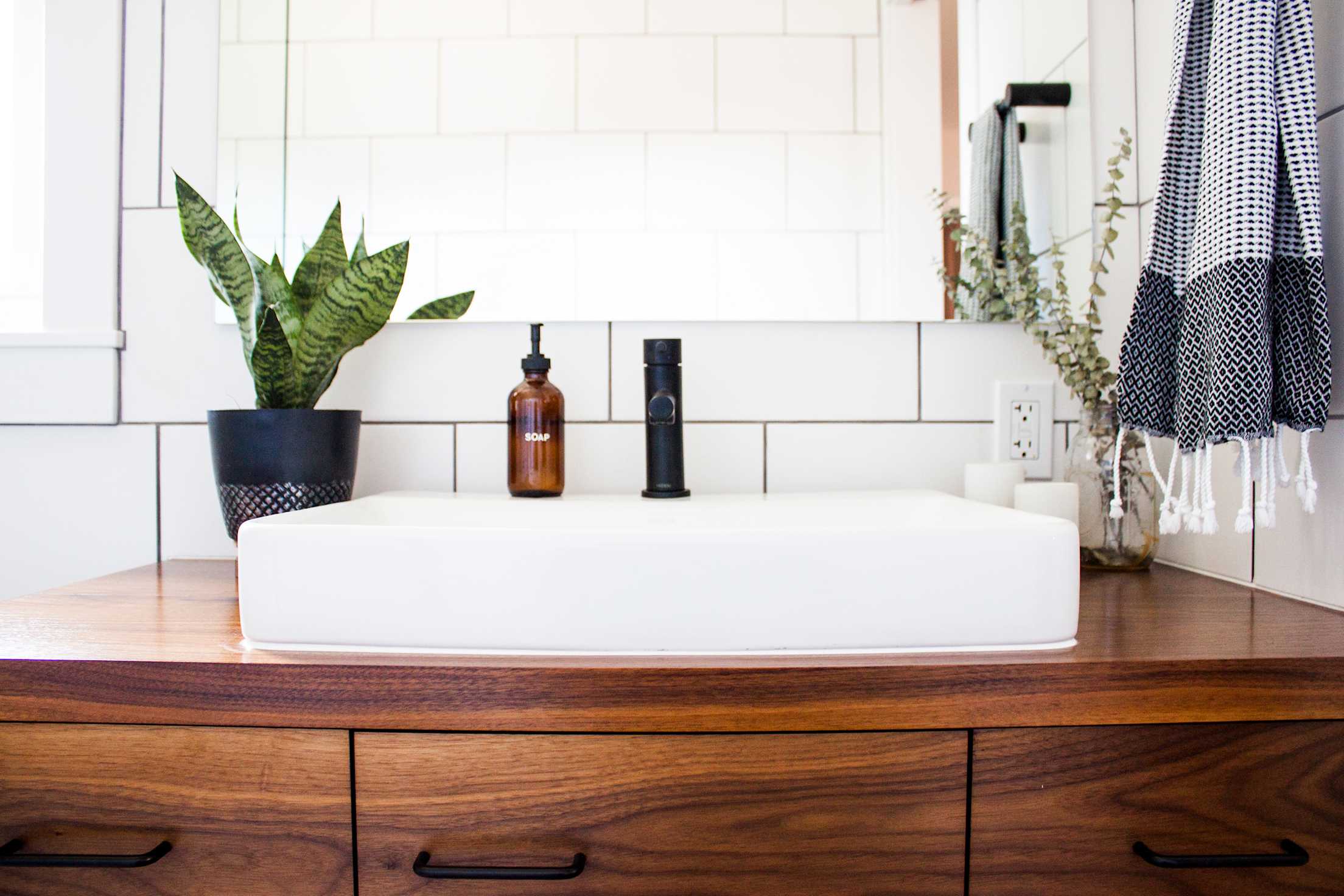
10 Ways to Save Water at Home
Simple habits and home upgrades can save thousands of gallons each year.

The Western U.S. is no stranger to drought and warm, dry summers. Five of the driest states in the nation—Nevada, Arizona, Utah, New Mexico, and Wyoming—are here in the West. But record-topping temperatures and yearly rainfall shortages have led scientists to warn that we may be in the midst of an extended megadrought (a rare event where dry conditions last more than 20 years) fueled by climate change.
In the middle of June, Lake Mead dropped to its lowest level since the Hoover Dam was completed in 1935. The Colorado River—which supplies water to 40 million people in Arizona, California, Colorado, Nevada, New Mexico, Utah, and Wyoming and the West’s multi-billion dollar agriculture industry—has not flowed into the ocean at its terminus at the Sea of Cortez in Mexico since 1998 (though it did briefly during an experiment in 2014).
Drought and water shortage are expected to become more frequent in the future as global demands rise and climate change alters weather patterns. The good news? Saving water at home can make a real difference—and doesn’t have to be hard.
“Conservation actions are one of the easiest and most cost effective ways that we can collectively help stretch our water supply,” says Julie Ortiz, water conservation manager for the San Francisco Public Utilities Commission, “and that, in turn, makes us more resilient to shortages from climate change, drought, and other causes.”
Here’s what you can do at home to help conserve one of the West’s most vital resources.
1. Know what you use.
It takes less than five minutes to find out how much water your household normally consumes throughout the year. Your current and historic water use are typically included at the bottom of your water bill, and some utility companies will also share this information in your online account.
However, while your water bill will tell you how many gallons you use, it can’t specify where the bulk of your water is going. Online water use calculators like Water Footprint Calculator can help you estimate your breakdown of indoor and outdoor water use, and suggest targeted ways to cut back.
You can also schedule a free WaterWise evaluation through your local utility. A conservation expert will help you find leaks, determine the best ways to save, and tell you about any water-saving rebates or incentive programs you may be eligible for.
Smart Tip: Before you invest in a new water-saving product, check your local utility’s website for rebates, discounts, or incentive programs that may make your upgrade more affordable.

2. Adjust your watering habits.
“In the arid West, most municipal is used outdoors,” says Doug Bennett, conservation manager for the Southern Nevada Water Authority. “A typical household will use more than half of all water outdoors for landscape irrigation.” People in the U.S. use nearly 9 billion gallons of water outside each day, enough to fill 450,000 average-sized swimming pools, according to the Environmental Protection Agency.
Simple steps can drastically cut your outdoor consumption:
- Water your lawn less. The Southern Nevada Water Authority found that most of its customers were overwatering their lawns by an average of 40 percent. “The most wasteful period is in the fall, when people continue to operate their irrigation schedule at summer levels even as the days are shortening and average temperatures are dropping,” Bennett says. The EPA recommends placing a few empty tuna cans on your lawn and timing how long it takes to fill them with a half inch of water. Try watering that amount just twice a week and adjusting based on how your landscape responds and the week’s weather.
- Reset your automatic sprinkler systems. Homes with automatic garden sprinklers can use twice as much water on landscaping as homes without them according to the EPA. Take a look at how often you are watering and for how long to make sure it matches your plants’ needs. Your local utility can help you choose the best settings for your yard.
- Water in the early morning or after sunset. This gives plants a chance to absorb the water and reduces how much is evaporated during the hottest part of the day.
- Don’t water when it rains or when the ground is still wet. Manually turn off sprinkler systems if needed.
Smart tip: Raising your lawn mower blade can give you a healthier lawn with less water. Longer blades of grass encourage deeper roots, cut down on evaporation, and make it harder for weeds to take root.
3. Install a better watering system and smart irrigation controllers.
You don’t have to go for the most technologically advanced irrigation system possible. A simple rain barrel can be the perfect solution to water your veggie garden and still save you around 1,300 gallons during the summer, according to Water Footprint Calculator.
If you can invest more, add targeted drip irrigation for landscaping and upgrade all of your irrigation systems, including any existing sprinklers, with a WaterSense controller that adjusts when and how much it waters based on the local weather. Replacing a clock timer controller with a WaterSense model can save the average home roughly 8,800 gallons of water each year, according to the EPA.

4. Remember every drop counts and fix leaks quickly.
“People greatly underestimate how much water can be wasted from plumbing fixture, appliance, and irrigation system leaks,” says Ortiz. Dripping faucets, worn toilet flappers, and other seemingly minor leaks can cause the average household to waste nearly 10,000 gallons of water every year according to the EPA. Check your plumbing, appliances, and irrigation for leaks frequently, and fix any problems immediately.
5. Flush less down the drain.
Households in the U.S. flush an average of 33 gallons of water a day, which is nearly a quarter of total indoor water usage. A single flush can use between one and six gallons of water, depending on the age and efficiency of your toilet. Choosing to flush less frequently is one of the easiest ways to save.
By now you’ve probably heard the old adage, “If it’s yellow, let it mellow. If it’s brown, flush it down.” Experiment with only flushing solid waste. If you simply can’t break the habit, you can also retrofit your existing toilet or install a new dual flush model so you use less water when washing down liquids.
To slash your use even further, replace older toilets, especially those that use up to six gallons per flush, with a high-efficiency, WaterSense-labeled model that uses .8 to 1.6 gallons per flush.
6. Upgrade your fixtures.
“The most cost-effective change you can make is to install WaterSense-labeled showerheads,” says Bennett. “Since the average shower is 75 percent hot water, a $20 investment can produce returns on both water and energy.”
Swap out the faucets and showerheads throughout your home for WaterSense-labeled, low-flow, high-efficiency models that use less than 2 gallons per minute. Each year, the average family can save 2,700 gallons and enough energy to power a house for 11 days by replacing wasteful showerheads according to the EPA.
Smart tip: Renters can easily replace the existing fixtures with water-saving upgrades without risking their deposit. Simply put back the original faucet and/or showerhead before you move out and reuse your efficient fixtures at your next place.

7. Be efficient and pay attention every time you turn on the tap.
We all know to turn off the tap when we brush our teeth and to never walk away from a running faucet or hose. Simple daily habits like these can help keep water conservation front of mind while chipping away at daily waste.
- Shorten showers or shower less often. Showers use an average of 27 gallons a day, and cutting a single shower by five minutes can save more than 12 gallons.
- Turn off the water when shaving. You can use a bit of water in a cup, a bowl, or the sink or tub to rinse your razor and your skin.
- Always turn off the tap when lathering and washing your hands until you’re ready to rinse.
- If you must wash dishes by hand, fill the sink or a plastic tub with soapy water to wash your dishes rather than individually soaping or letting the tap run while you scrub.
- Put a bucket in the shower while the water warms up and use it to water plants, clean, or even flush the toilet.
- When possible, wear your clothes more than once before washing.

8. Only wash full loads.
You can finally put down the sponge. Water-efficient dishwashers use less than half as much energy and save more than 5,000 gallons of water per year when compared to washing dishes by hand. Hurrah!
To get the most out of your dishwasher and washing machine, and to prevent waste, always run full loads and use any available eco settings. If you have an old dishwasher that won’t cut through the grime or a water-guzzling top-loading washing machine, consider replacing it with a high-efficiency, Energy Star model.
9. Choose water-wise landscaping.
Ditch the lawn and plant less thirsty, beautiful options. “Converting a lawn to a water-efficient landscape saves 56 gallons of water per square foot per year,” Bennett says. “That's equivalent to 7.5 feet of rainfall.” Many water departments offer hefty rebates for replacing your lawn, and local low-water gardening groups and landscapers can help you choose the best plants for your soil and environment.
10. Care for your trees.
“The lawn can die and it will come back, but you’ve got to keep the trees alive,” says Julie Saare-Edmonds, senior environmental scientist at the California Department of Water Resources. Healthy, established trees provide much needed shade for homes and yards (which means you don’t have to water as often or crank up the A/C), improve air and water quality, and help fight climate change.
Whether you’re trying to save water or rationing during a drought, remember to give priority to trees and shrubs and properly water them so they can continue to give back. “Don't scrimp on trees,” Southern Nevada Water Authority’s Bennett says. “Shade is scarce and valuable in the desert southwest. While a lawn takes water and produces an evaporative cooling effect, only a tree can shade a wall or a building, reducing heat island effect and saving energy.”